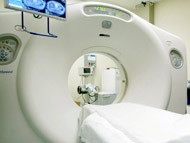I’ve previously blogged about the prospect of football helmet manufacturers facing product liability lawsuits for design defects in their helmets and the resulting brain injuries that occur.
This week came news that former NFL lineman Ralph Wenzel has filed a Worker’s Compensation claim that says head injuries he sustained in the course of his NFL career are responsible for his present-day dementia.
Of course, a Worker’s Compensation claim for football head injuries is recourse that is only available to former professional football players, not to college or high school players who sustained brain injuries while playing for fun, rather than as part of their “job” or “work.” But even though these Worker’s Compensation claims are available only to the tiny fraction of football players who played professionally, the consequences could be enormous. The potential liability faced by the NFL in Worker’s Compensation claims relating to head injuries could be $100 million or more. Liability of that scale is big enough to force even a multi-billion dollar empire like the NFL to consider its rules and regulations regarding concussions and other head injuries. Football fans might even see the three point stance abolished as a result!
Worker’s Compensation pre-emption means that former pro football players cannot sue their former teams directly for brain injuries they sustained from their playing (they can however maintain product liability actions against the helmet manufacturers). High schools and colleges need to be alert to the prospect of this kind of litigation because their players are “students,” not “workers,” and Worker’s Compensation laws do not prove a bar to suing them directly. High school and college programs could therefore face even greater liability than the NFL.
It is a startling realization, but legal liability for brain injuries might fundamentally alter the rules of football and transform it place in our culture.
My guess, however, is that the NFL lobbies the California legislature to change the law with regards to football players.
Category Archives: Products Liability
FDA Scientist Says He Was Forced Out Because He Would Not Approve Medical Imaging Procedure
I’ve previously blogged about the dangers of excessive radiation involved with medical imaging procedures, such as CT scans and x-rays, and the FDA’s new program to reduce patients’ unnecessary exposure to radiation.
Last week, as part of that FDA program, Dr. Julian Nicholas, a former FDA scientist, testified that he was forced out by his FDA bosses when he refused to approve General Electric’s “virtual colonoscopy” procedure, a product that would use CT scans to test for colon cancer. Dr. Nelson refused to endorse GE’s virtual colonoscopy because between 1.5 and 2 percent of all cancers are caused by radiation from CT scanning and Dr. Nicholas did not believe that the level of  radiation exposure involved in CT colonoscopies was justified by increased detection or the less invasive nature of the procedure (compared to traditional colonoscopies). A patient receiving a single CT scan gets as much radiation from the CT scan as he would from 400 chest x-rays.
radiation exposure involved in CT colonoscopies was justified by increased detection or the less invasive nature of the procedure (compared to traditional colonoscopies). A patient receiving a single CT scan gets as much radiation from the CT scan as he would from 400 chest x-rays.
CT scans, nuclear medicine and fluoroscopy are only one-fourth of all medical imaging procedures in the US (x-rays are far more common), but these procedures expose patients to nearly 90 percent of the radiation they get from medical imaging. They are also, generally, more lucrative for hospitals than x-rays.
Electric Bicycles: Coming Soon To A Massachusetts Roadway Near You
Electric bicycles have long been popular in Europe and Asia but, a couple weeks ago on NPR’s Science Friday With Ira Flatow, I learned about their growing popularity here in the United States. Industry experts in America predict there will shortly be one million electric bikes on the road here in the States.
An electric bicycle is essentially your typical bicycle (ideally a bicycle with a sturdy frame) that is equipped with an electric motor or battery. Pedaling the bicycle charges the battery. Cyclists can then allow the electric motor to completely power the bicycle or merely use it to get a little extra “oomph” when pedaling up steep inclines or when fatigued.
A typical electric motor, although small and noiseless, can power the bikes up to speeds of 30-40 mph on downhill runs.
Modification kits that turn a standard bicycle into an electric one cost only a few hundred dollars.
As you can see from the Youtube video, electric bikes are a lot of fun and are pretty much the ideal form of transportation for a long bicycle ride in, say, Napa Valley or on Cape Cod. But I think most personal injury lawyers considering the coming boom in electric bikes will have worries about rider safety.
One of the leading causes of motorcycle accidents is the low profile and low visibility of most bikes. Auto drivers too often don’t see bikers and accidents are the result. This problem seems even more severe with electric bikes, since most electric bike motors are placed on a fairly standard bicycle frame.
In addition, electric bicyclists cruising around at 40 mph need better head protection than the typical bicycle helmet. Using a low-impact bicycle helmet when you’re traveling at 40 mph risks serious head and brain injury. Electric bicyclists traveling at high speeds should be wearing motorcycle helmets.
Lastly, whenever a new product comes on the market, its manufacturers generally haven’t worked through all the design flaws that they inevitably discover later.
But with conversion kits so cheap and the bikes so fun to modify, I suspect we’ll be seeing a lot more of them here on the roads in Massachusetts shortly.
Life-Threatening Baby Slings Sold In Massachusetts Recalled
The Consumer Product Safety Commission, in cooperation with Infantino, LLC, issued a recall on March 24, 2010 of two models of baby slings that have caused at least three infants to fatally suffocate.

The models – “SlingRider” and “Wendy Bellissimo” – were sold from January 2003 through March 2010 at Walmart, Burlington Coat Factory, Target, Babies “R” US, BJ’s Wholesale and other retailers.
The slings pose two distinct risks of suffocation to infants who are carried in them. Some infants may suffocate when the sling curls the baby’s body, bending the baby’s chin to her chest, thus constricting the baby’s airway. Additionally, a baby whose mouth or nose is pressed up against the sling’s fabric may be unable to breathe.
Parents should immediately discontinue using the baby sling and make sure that it is not re-sold or given to others. Thank you to personal injury lawyer Bob Kraft for alerting me to this serious recall.
Massachusetts Man Wins $1.5 Million In Table Saw Case
 In a recent Boston Globe article, reporter Jenn Abelson covered a $1.5 million jury verdict in favor of a Malden man, Carlos Osorio, in a products liability action against a table saw manufacturer that claimed the saw was defective because it was not equipped with “flesh detection technology” that would have caused the blade to stop when it got too close to human flesh. Yes, such “flesh detection technology” does exist and is quite effective.
In a recent Boston Globe article, reporter Jenn Abelson covered a $1.5 million jury verdict in favor of a Malden man, Carlos Osorio, in a products liability action against a table saw manufacturer that claimed the saw was defective because it was not equipped with “flesh detection technology” that would have caused the blade to stop when it got too close to human flesh. Yes, such “flesh detection technology” does exist and is quite effective.
Flesh detection technology is just another example of a safety device that would probably not exist if there were no products liability lawyers to force manufacturers to internalize the costs that society incurs through the use of dangerous and defective products. Table saws without such safety technology are cheaper. Most table saws are probably purchased and used by construction companies, who generally can’t be sued by their employees because of Worker’s Compensation technology. Do you think construction companies would be willing to shell out extra for a premium model? It seems unlikely. But manufacturers sell saws equipped with flesh detection technology because it’s cheaper to offer safety technology than to pay up in lawsuits.
A couple generations ago, products liability lawyers were the ones who got manufacturers to adopt safety guards and other “bells and whistles.”
If you see a lawyer today, give her a hug. She may have saved your fingers from being sawed off.
Journal Article Reveals Undisclosed Conflicts Of Interest In Avandia Studies
Professor Alberto Bernabe’s Torts blog has a good round-up of the recent coverage of a British Medical Journal article revealing undisclosed financial ties between researchers who discounted a link between the diabetes drug and heart attacks and the drug’s maker, GlaxoSmithKline.
In 2007, the FDA issued a warning that Avandia may elevate a patient’s risks for a heart attack. Since that time, more than 200 scholarly articles have been published. In about 90 of those articles, the authors had a financial interest in Avandia. However, one-quarter of the time when authors had a financial conflict of interest, they did not disclose the conflict.
And in fourteen percent of the articles, the authors stated that they had no conflict of interest, when in fact, the authors of this new article say they did.
The authors of this new British Medical Journal say that the number of Avandia researchers who disclosed their conflicts of interest was “unexpectedly low.” They also found that 94 percent of researchers who had positive opinions of Avandia received industry funding.
FDA To Investigate Link Between Osteoporosis Drugs And Femur Fractures
In response to research and media reports suggesting a link between a certain class of osteoporosis drugs – known as oral bisphosphonates – and femur fractures, the FDA announced yesterday that it is working with outside experts to insure that the osteoporosis drugs are safe.
Fosamax, Actonel, Boniva and Reclast are all oral bisphosphonates, the class of drugs under investigation. Some have claimed that long-term use of these drugs raises the risk of an unusual type of femur fracture just below the hip that is known as a subtrochantreric fracture.
The Wall Street Journal reports that two studies that were presented this week at the American Academy of Orthopaedic Surgeons’ annual meeting suggests that long-term use of Fosamax and Boniva (where “long-term” means four or more years of use) may lead to reduced “bone structural integrity.”
In 2008, the FDA warned that Fosamax had been lined to serious joint pain.
The FDA cautioned yesterday, however, that people taking oral bisphosphonates should not stop taking the drugs without first consulting with their physicians. At this point, the FDA believes that the benefits of Fosamax and the other oral bisphosphonates outweigh the potential risks that it is investigating.
The FDA Has No Regulations About Acceptable Bacterial Levels In Bagged Salads: Sign Petition To Get Them
Umm, is it 1906 again? Do we need another Pure Food and Drug Act?
Last month, Consumer Reports ran an article entitled Bagged Salad: How Clean?, revealing that some bagged salads contain disturbingly high levels of bacteria and highlighting that there are no FDA regulations about acceptable bacterial levels in leafy greens.
Now the FDA has opened a special docket, where you can register your vote supporting food standards for leafy greens and urging “zero tolerance” for bacteria like E. Coli O157:H7, salmonella and listeria, a standard that already exists for other food products.
The Tort Reform Crowd Thinks This Was A Frivolous Lawsuit
Reading the tort reform blog Pointoflaw.com, I came across a link captioned: “‘Ford failed to warn seating unsafe for obese persons’ suit fails.” Sounds pretty frivolous, right?
I followed the link to Abnormal Use, a corporate defense blog, which has the virtue of being intellectually honest, unlike Pointoflaw. There I got the whole story.
It wasn’t just some overweight person who was suing Ford for failure to warn a chair might collapse under her weight.
The plaintiff in the case was a 300 pound woman driving a Ford Explorer that was rear-ended by another SUV at the (relatively low) speed of 30 mph. The impact of the accident caused her seat to collapse backwards. The accident also left her a paraplegic.
Ford hadn’t tested or designed the seats for anyone above 220 pounds. Now here’s a little graph that I just found through a simple google search that shows about 5-10 percent of men are in the 220 pound range. Yet Ford didn’t bother testing above 220 pounds.

And this poor woman wound up a paraplegic in a 30 mph accident. Sound frivolous now?
Yet, according to the blog post, the trial court entered a directed verdict against her on her failure-to-warn claim and didn’t even let that claim get to the jury.
I assumed that this woman’s failure-to-warn claim was not her only claim and that she also brought breach of warranty claims against Ford. I was hoping that she managed to prevail on one of those other claims. I went to the (unreported) decision on Westlaw. It appears the other claim did make it to jury and that the jury found against her.
I have a great respect for juries and jury verdicts so I’ll leave alone the fact that the jury found against her on a strict liability standard that should’ve been unfavorable to Ford.
But the online reporting about this case illustrates how the media stir up worries about frivolous lawsuits.
This wasn’t an overweight person who sued Ford because the seat collapsed under her weight and she fell on her butt. This was a woman who was rendered a paraplegic, in part, because Ford didn’t test its seats above a weight range within which some ten percent of the adult male population falls. And she wasn’t suing Ford for failing to include a warning label on the chair saying, “If you’re too heavy, this seat may cause injuries.” Her failure-to-warn claim was just one of the legal theories she pursued (her claim for breach of the warranty of merchantability was much stronger).
From a societal perspective, cases like these should really boil down to: Who should bear the cost? As a paraplegic, this woman will require millions of dollars in medical care for the rest of her life. Who should bear the cost of that? We, the taxpayers, or Ford, a company that profits from a car seat that it never bothered to test at 30 mph with a dummy weighing more than 220 pounds? If Ford has to bear the cost do you think that maybe next time they might design a better seat?
Good NPR Program On Toyota Recall
NPR’s OnPoint program, broadcast from Boston’s own WBUR, had a terrific hour-long program on the Toyota recall today. You can listen here.
